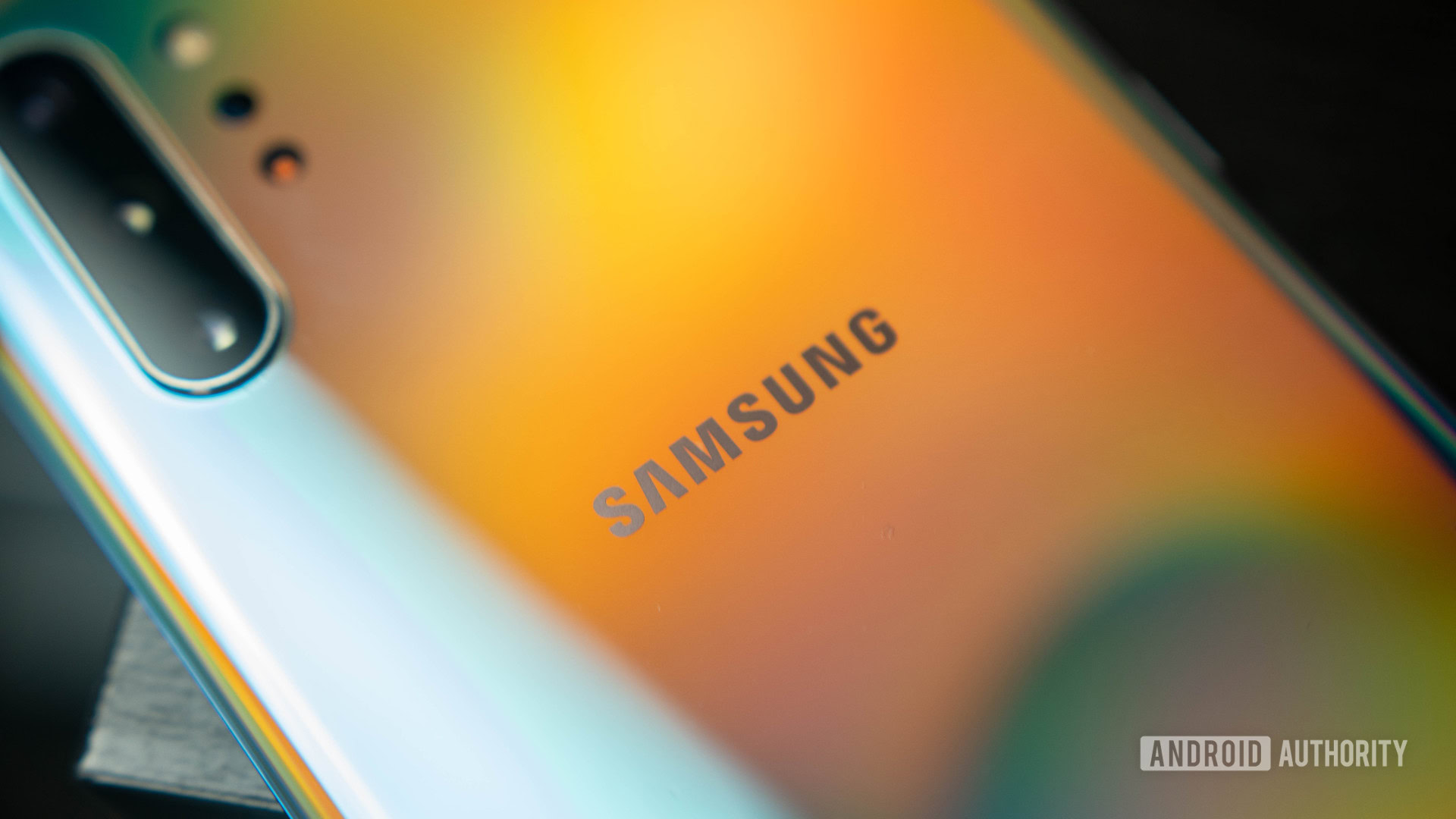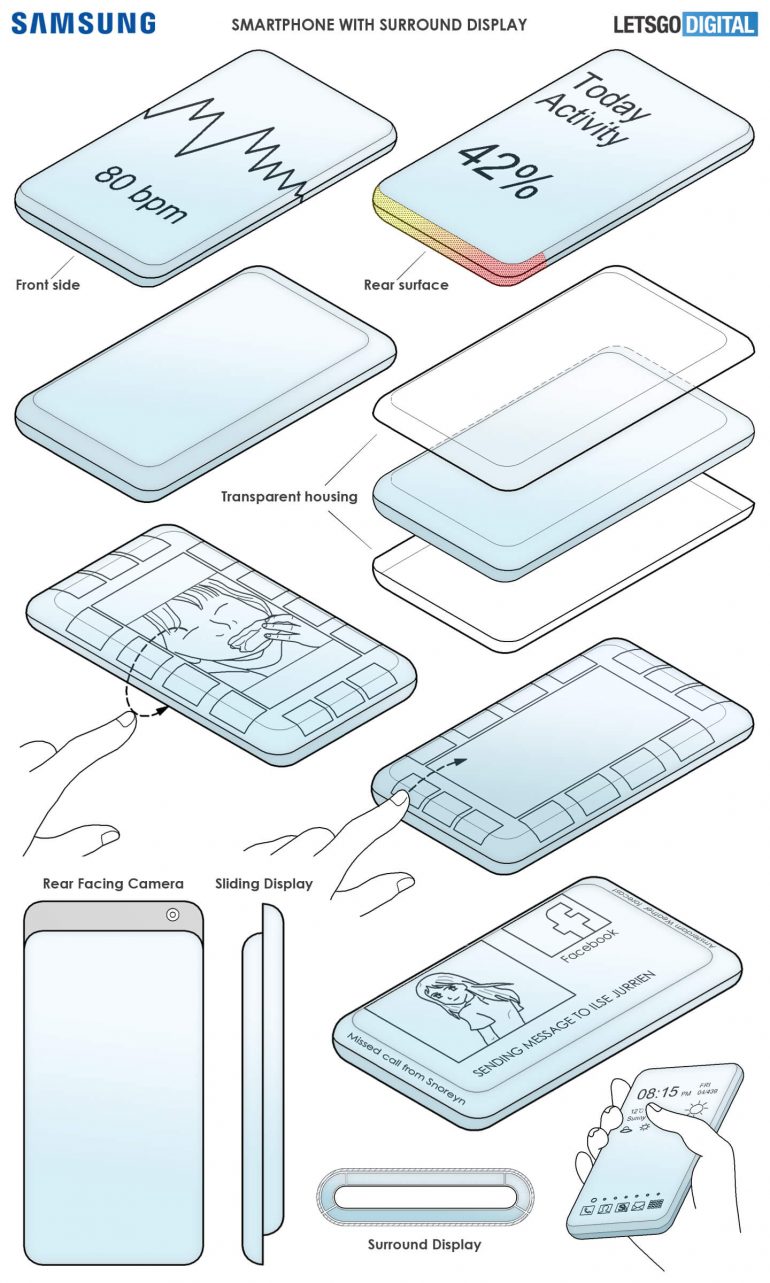Affiliate links on Android Authority may earn us a commission. Learn more.
Two screens, one sliding phone: Samsung's latest patent design sure is bold
November 10, 2020

- Samsung has patented an outlandish sliding phone design with two screens.
- The displays are positioned at the phone’s front and back and appear to meet at its flanks.
- The design also packs hidden rear cameras and an in-display selfie camera.
Samsung could add another outlandish form factor to its future phone lineup, at least if a new patent is to be believed. Spotted by LetsGoDigital, the patent was reportedly filed in July but only recently came to light.
The design showcases a sliding smartphone with two screens – a curved display upfront, and a flat screen at the rear. Visually, the displays appear to “meet” at the phone’s flanks, giving the impression of a single wrap-around display.
This would likely be done for aesthetics, but drawings of the UI support a usability case, too. One figure demonstrates how users could drag apps from the main screen to the rear display. Another showcases how the rear screen could display information about a photograph or video occupying the front screen.
Despite this design though, Samsung doesn’t explicitly state the two screens have to employ the same technology. The patent mentions the front display could use OLED or LCD tech, while the rear display could be an e-ink screen.
As for the sliding mechanism, it seems largely a ploy to keep the phone’s clean aesthetic and to hide the rear camera. The back shooter is uncovered by sliding the front display up. A selfie shooter is located under the front screen, too. It’s unclear why Samsung wouldn’t consider using a camera below both screens and abandon the sliding body, although image quality is a concern with under-display cameras.
Samsung’s sliding phone design: Daft or dreamy?
Samsung’s design is visually compelling, but it would arguably prove a nightmare for pragmatists. With screens at the front and back, putting this thing in a case would be difficult. Samsung would also need to develop some pretty smart palm rejection tech to ignore those inevitable wayward touches, too.
The screen arrangement is questionable, but the sliding system makes heaps of sense. It’s a design we’ve seen HMD Global explore in more detail recently with the abandoned Nokia N95 concept. It allowed the firm to hide the selfie camera and include a beefier loudspeaker without sacrificing usability. Samsung could build a pretty powerful entertainment handset using this philosophy.
As Samsung’s patent design stands, it’s unlikely we’ll see it on a mainstream device anytime soon. Considering how ridiculous foldable phones seemed just a few years ago, we wouldn’t totally rule it out, though.
Thank you for being part of our community. Read our Comment Policy before posting.
